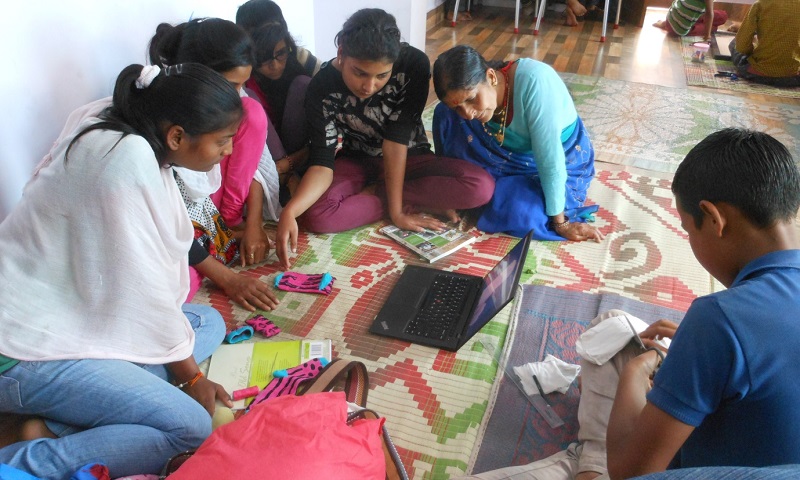
Media & Information Literacy (MIL) is the new age felt need to reduce social inequalities and provide opportunity to marginalised or geographically disadvantaged people. The Global Alliance for Partnerships on Media and Information Literacy (GAPMIL) is a UNESCO initiative to develop an empowered global citizenry towards an inclusive society.
GAPMIL: Objectives and Curriculum
GAPMIL is positioned to create a media and information literate global society across borders, communities and stakeholders, with a particular emphasis on youth. It embraces the volatile space of social media that needs to be strategized for appropriate use. In an information driven age, where agendas and misinformation proliferate, MIL gives competencies to access, analyse, create, reflect and act upon information.
The objectives of GAPMIL are clearly linked with several Sustainable Development Goals, in the areas of:
- Governance, citizenship and freedom of expression;
- Access to information and knowledge for all citizens;
- Development of media, libraries, Internet and other information providers;
- Education, teaching, and learning - including professional development;
- Linguistic and cultural diversity as well as intercultural and interfaith dialogue;
- Women, children and youth, persons with disabilities and other marginalized social groups;
- Health and wellness;
- Business, industry, employment and sustainable economic development;
- Agriculture, farming, wildlife protection, forestry and natural resources conservation as well as other areas.
A UNESCO Training of Trainers (TOT) MIL Curriculum is available as an Open Educational Resource (OER) and Massive Open Online Course (MOOC) for worldwide adaptation and use in face-to-face or online trainings.
MIL in India
India is one of the countries that has moved in the direction of MIL. Several ground initiatives have been conducted in co-operation with and led by UNESCO and the King Abdullah Bin Abdulaziz Centre for Inter-religious and Inter-cultural Dialogue (KAICIID).
As a result, 50 M. Ed scholars, over 20 social development stakeholders (including women leaders, disaster management experts and school teachers), over 20 religious leaders and over 20 young religious practitioners have received basic / extended / intensive MIL face-to-face training.
These MIL trainings lead to a better understanding of information, a consciousness about self-regulation both by media and citizens in the media landscape, the potential of using MIL particularly for development and inter-faith dialogue. Most express the desire for further focussed training for MIL in context of social media.
A simplified version of MIL is being imparted to rural children of four villages surrounding Naukuchiatal, in the marginalised state of Uttarakhand, India. Deepak Dumka is a 14-year old boy perceived as a problem child and trouble-maker. With basic MIL skills, he has learnt to play the national anthem and a prayer song, make paper bags and varnished rolled paper pen-stands from You Tube. Visitors are shocked ‘this’ boy could be so creative. In the next stage, children passing out from school will be introduced to Open University vocational training, which they can access without travelling long distances in a geographically difficult terrain. Watch and catch a glimpse of this world in this short video.
MIL for Change – Lessons Learned
MIL is a competency that can bridge gaps of the Digital Divide and build platforms with active citizen participation for adaptation of best practices across the world. As yet, carefully constructed campaigns for social change are mostly missing on social media. MIL trainings have shown that participants need extended training, where they can concretely conceive the construct and methodology of using social media for their work. This needs to be incorporated in MIL curricula as extended training.
Recommendation: MIL for the SDGs
A concrete way of linking MIL to the SDGs is to include entry-level MIL training for target groups as a mandatory integrated component in UN projects, similar to Monitoring & Evaluation. This would enable MIL to become a core competency in various sectors linked to the SDGs.
‘At the Heart of Change – The Role of Communication in Sustainable Development’ (2007), was a study by PANOS London supported by the Department of International Development of the United Kingdom (DFID). The Executive Summary states:
“Development efforts are not fulfilling the promises made in the Millennium Development Goals (MDGs)…One fundamental reason is that policymakers and development experts do not recognise the essential role that information and communication play in development. Sustainable development demands that people participate in the debates and decisions that affect their lives. They need to be able to receive information, but also to make their voices heard. The poor are often excluded from these processes by geography and lack of resources or skills...”
It would be wise to keep the above in mind in relation to MIL and the SDGs.
Note: In 2015, FORMEDIA’s MIL linked intervention for a High-Level Segment of the Economic and Social Council (ECOSOC) was submitted to the Secretary-General and circulated as per the norms. (Reference UN ECOSOC – E/2015/NGO/48.)
Learn more about the FORMEDIA foundation.
Learn more about UNESCO GAPMIL.
 Welcome to the United Nations
Welcome to the United Nations